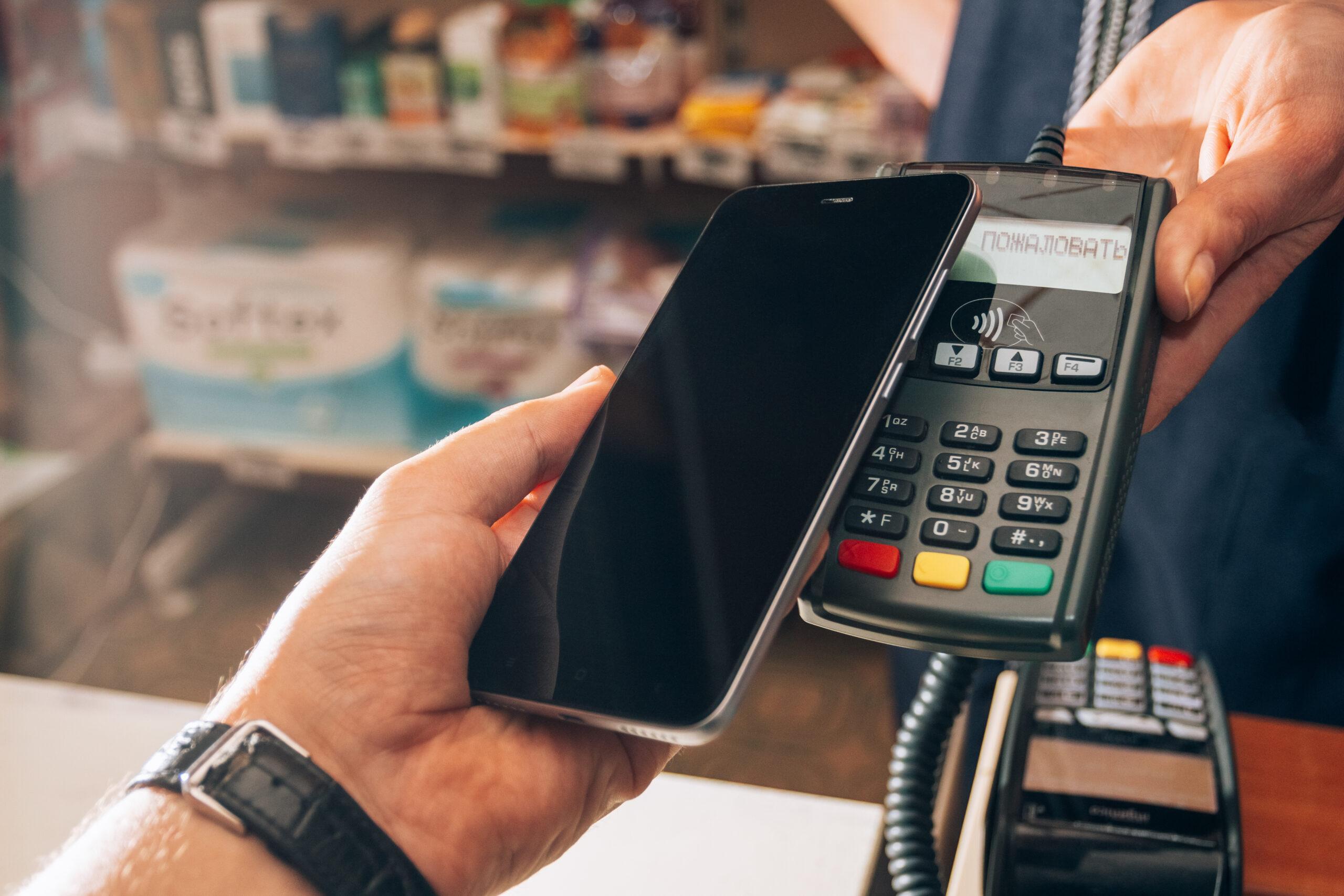MENU
Starting a Business
- Best Small Business Loans
- Best Business Internet Service
- Best Online Payroll Service
- Best Business Phone Systems
Our Top Picks
- OnPay Payroll Review
- ADP Payroll Review
- Ooma Office Review
- RingCentral Review
Our In-Depth Reviews
Finance
- Best Accounting Software
- Best Merchant Services Providers
- Best Credit Card Processors
- Best Mobile Credit Card Processors
Our Top Picks
- Clover Review
- Merchant One Review
- QuickBooks Online Review
- Xero Accounting Review
Our In-Depth Reviews
- Accounting
- Finances
- Financial Solutions
- Funding
Explore More
Human Resources
- Best Human Resources Outsourcing Services
- Best Time and Attendance Software
- Best PEO Services
- Best Business Employee Retirement Plans
Our Top Picks
- Bambee Review
- Rippling HR Software Review
- TriNet Review
- Gusto Payroll Review
Our In-Depth Reviews
- Employees
- HR Solutions
- Hiring
- Managing
Explore More
Marketing and Sales
- Best Text Message Marketing Services
- Best CRM Software
- Best Email Marketing Services
- Best Website Builders
Our Top Picks
- Textedly Review
- Salesforce Review
- EZ Texting Review
- Textline Review
Our In-Depth Reviews
Technology
- Best GPS Fleet Management Software
- Best POS Systems
- Best Employee Monitoring Software
- Best Document Management Software
Our Top Picks
- Verizon Connect Fleet GPS Review
- Zoom Review
- Samsara Review
- Zoho CRM Review
Our In-Depth Reviews
Business Basics
- 4 Simple Steps to Valuing Your Small Business
- How to Write a Business Growth Plan
- 12 Business Skills You Need to Master
- How to Start a One-Person Business
Our Top Picks
Table of Contents
Businesses today employ various mobile device marketing strategies and understand that their customers may opt to buy immediately from their smartphones. They need a mobile-friendly website to create a seamless experience.
A mobile-friendly website isn’t just a way to improve the customer experience. In 2015, Google started requiring web pages to be optimized for mobile use to rank well in mobile search results. Here’s how to ensure your website is accessible on mobile platforms so that you can please customers and search engines while boosting your brand image and sales.
How to make your website mobile-friendly
If your website is unprepared for mobile-first indexing by Google and other search engines, it will have serious ranking problems. No matter how stylish and fabulous your landing page is, it means little if it’s not optimized for mobile. So, how do you convert a website to a mobile-friendly format?
Reorganizing your desktop content elements into mobile-friendly versions will create a mobile version of your site. You’ll deliver a responsive website that matches the desktop version. Follow these steps to create this new website design.
1. Use a mobile-friendly template.
When choosing a website template or theme, look for a mobile-responsive option. E-commerce website builders, such as Squarespace or Wix, have easy-to-customize, mobile-responsive themes. You can also find mobile-responsive themes using WordPress via its content management system or by searching Google for “responsive theme + WordPress.”
If your current website theme is nonresponsive and doesn’t have a mobile-friendly option, try adding the following code to the <head> tag of your website pages:
<meta name=”viewport” content=”width=device-width, initial-scale=1.0″>
Try this code on a few pages to see if it changes the width of your web pages automatically to match the smart device being used. If not, or if you have a complex website with many separate pages, you may consider updating your template to be mobile-friendly.
The best website builders and design services offer numerous responsive templates and mobile responsive designs that modify your site automatically to adapt to the viewer’s device.
2. Simplify your main page.
Once your site is mobile-friendly, you must tweak your main page (and subsequent pages) by removing excess content. For example, if you run a salon, your mobile site’s main page should have a simplified form to make an appointment. Other information, such as services, prices and gallery photos, should be on separate pages to avoid conflict with the primary form.
On a desktop website, several photos, text or forms on one page may be fine but more information is needed to ensure visitors complete the primary task on a smart device. A simplified main page should emphasize the most important call to action to convert viewers.
3. Increase speed of use.
Page-load speed is crucial in the mobile realm. The faster your mobile-friendly website can load, the better. To embed videos, host them on a third-party site, compress images and dial down custom Cascading Style Sheets code. Slow websites don’t score as well in search engine results pages, which means your competitors can rank higher than you on platforms like Google.
4. Consider touchscreens.
People use touch on mobile devices to select buttons and links. Using thumbs instead of a mouse can create unique challenges when designing a mobile-friendly website. These tips and tricks will help:
- Use big buttons: Clickable buttons should be oversized and placed in the lower left, right or middle of the screen. Along with legible text, big buttons will improve the overall user experience (UX) and increase conversions.
- Avoid flash elements: Avoid animated flash elements as many mobile devices don’t support them.
- Use thoughtful link spacing: Space out links so that users don’t accidentally select the wrong one. Users shouldn’t have to zoom in to select a link or view text.
- Get rid of pop-ups: A mobile site pop-up can devastate your traffic if visitors can’t remove or bypass it. Triggers for things like email pop-ups can also be limited on mobile.
- Use a clickable phone number: Add clickable phone numbers so that consumers can initiate calls quickly from your web page.
- Consider map functionality: If applicable, include a map of your office or store that can be opened in the consumer’s preferred GPS app.
- Consider keypad usage: Offer the option of using a keypad instead of the entire keyboard when asking users to fill out number fields on mobile forms. A keypad will help your visitors save time and check out faster when completing a purchase.
- Test your mobile site: Test your mobile-friendly website regularly to ensure it performs as you want it to. Running A/B tests can help you stay ahead of your competition.
When upgrading your site, consider Americans with Disabilities Act compliance. Creating an accessible e-commerce website is the right thing to do for your customers and your website’s quality and longevity.
What is a mobile-friendly website?
A mobile-friendly website, also called a “responsive” or “mobile-compatible” website, is easy to view, use and navigate on a smartphone or tablet. As people gravitate toward their smartphone or tablet for convenience and portability, they tend to favor mobile-friendly websites that adapt to touch controls and smaller screen sizes.
A responsive, mobile-friendly website reduces friction on e-commerce websites for users. These websites are accessible via the same address as their desktop site and include the same content. However, they adjust to the reader’s device, providing an uninterrupted UX.
How do you check if your website is mobile-friendly?
In 2023, Google shut down its popular Mobile Usability report and Mobile Friendly test, which gauged the usability of sites for mobile devices. These tools didn’t check for crucial factors like page load speeds, SEO, accessibility and the overall quality of online interactions for consumers.
Google recommends developers and website owners use Chrome’s Lighthouse tool to check for mobile-friendliness and other website factors. This tool aims to improve the overall quality of web pages, including ensuring ease of use on mobile devices. Google also recommends adhering to Core Web Vitals metrics to ensure a great UX.
According to Pew Research, nine in 10 Americans between 18 and 49 make purchases via smartphones. This makes short message service and mobile marketing crucial for brand awareness and increased sales.
Benefits of having a mobile-friendly website
Mobile-friendly websites bring several benefits that support and enhance your business’s success:
- Mobile-friendly websites increase conversions: You’re likely to earn repeat business from consumers who enjoyed your mobile-friendly website’s responsive, smooth and painless shopping experience. Consumers are more likely to spend an extended amount of time on your website and tell their friends and family about your company if it’s easy to use on a mobile device.
- Mobile-friendly websites create a streamlined experience: Great mobile-friendly e-commerce websites create the same optimized shopping experience and seamless checkout experience for consumers using any device. Whether on a mobile phone, tablet or desktop computer, consumers want to find what they need quickly and purchase without friction.
- Mobile-friendly websites download images quickly: Consumers don’t want to wait for images to download on a mobile website. If the shopping process is slow and painful, they’ll turn quickly to a competitor. However, mobile-friendly websites have optimized download speeds that help customers browse and purchase on the go.
- Mobile-friendly websites are affordable to maintain: Building and maintaining a mobile-friendly website is more cost-effective and faster than developing and updating a dedicated mobile app. Optimized mobile websites look like apps but don’t require developer costs.
- Mobile-friendly websites have higher SEO rankings: Mobile-friendly websites adhere to technical SEO tips that boost web traffic and improve search rankings, such as being responsive and error-free. They meet and often exceed Google’s standards for website quality.
Why optimizing your website for mobile is important
Beyond creating a seamless customer experience and ranking highly on Google, optimizing your website for mobile is essential for the following reasons:
- Mobile usage is growing continually: Mobile is a leading platform that keeps pace with or surpasses desktop use. As technology develops further, mobile devices will become even more ubiquitous. Your business will demonstrate that it keeps up with technology and trends if it’s easily accessible to consumers on the go.
- Mobile sites facilitate more online research: Searching the web on a mobile device is convenient and easy for consumers. The more time they spend browsing, the likelier they are to financially invest in your offerings.
- Mobile sites boost brand credibility: Consumers have come to expect excellent mobile website experiences. If your mobile site takes too long to load, they may give up and head to a competitor with a better offering. However, an excellent mobile site can help cement a positive brand image and boost word-of-mouth recommendations.
Other ways to boost brand awareness online include creating a striking logo, maintaining an active social media presence and enlisting influencers to market your brand.
How a mobile-friendly website differs from a mobile app
Mobile websites and mobile apps differ. Mobile-friendly websites consist of web pages users can access via any browser; the website adjusts to the device it’s being viewed on automatically, so the mobile experience is perfect. In contrast, a mobile app is custom software users can download to their mobile devices from various marketplaces, such as Apple’s App Store and Google Play.
Mobile-friendly websites and mobile apps have upsides and downsides.
Pros and cons of mobile-friendly websites
- Pro: Mobile-friendly websites are inexpensive to design and maintain.
- Pro: Mobile-friendly websites enjoy excellent compatibility with multiple devices.
- Pro: Users don’t have to install or download anything to access a mobile-friendly website.
- Pro: Mobile-friendly websites receive instant updates.
- Pro: Mobile-friendly websites are SEO-friendly.
- Con: Mobile-friendly websites aren’t as interactive as mobile apps.
- Con: Mobile-friendly websites have no offline access.
Pros and cons of mobile apps
- Pro: Users can access mobile apps offline.
- Pro: Mobile apps can create an interactive UX.
- Pro: Mobile apps enable notifications to keep users engaged.
- Con: Development and app store approval processes can be complicated.
- Con: Mobile apps require constant maintenance and upgrades.
Not every business needs a mobile app and a mobile-friendly website. But, at the very least, investing in a mobile-friendly website is vital to your business’s growth and sustainability.
According to a report by Harmony Healthcare IT, Americans spend an average of over four hours daily on mobile devices.
A mobile-friendly website benefits everyone
Mobile-first indexing benefits webmasters, marketers and consumers by incentivizing businesses to create high-quality mobile web experiences. Updating your website to ensure mobile-friendliness will encourage site visitors to return, shop, purchase and share your mobile website with others. An updated website eliminates friction and can increase your company’s conversions and profits. It’s a win all around.
Alexandra Tachalova contributed to this article.







